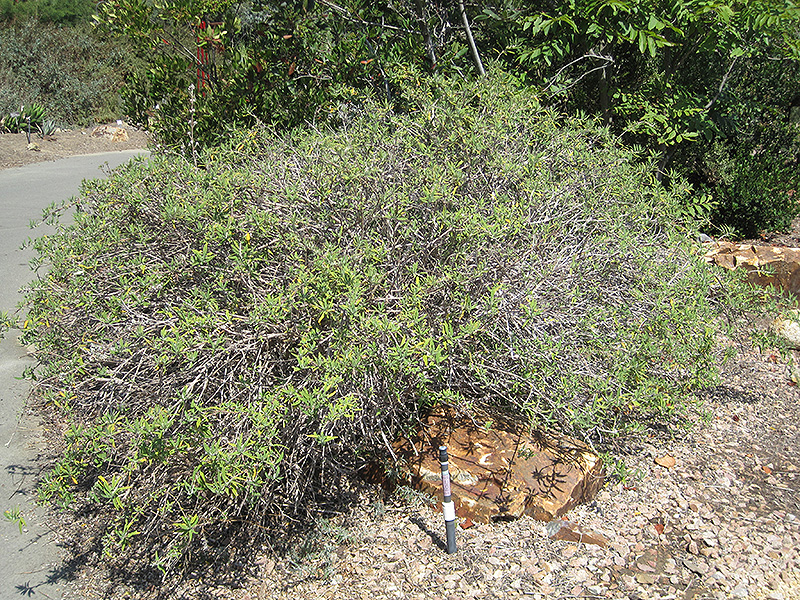Height: 5 feet Spread: 10 feet
Sunlight:
Hardiness Zone: 8a Description: A highly aromatic native shrub common to coastal California; takes on a dark, almost black appearance, especially during drought, hence the name; white, to pale blue-lavender, or rarely pale rose flowers appear in spring; leaves curl during summer drought Ornamental Features Black Sage has masses of beautiful spikes of creamy white flowers with lavender overtones rising above the foliage from mid winter to late spring, which are most effective when planted in groupings. It has green foliage with grayish green undersides. The fuzzy narrow leaves remain green throughout the winter. The smooth gray bark adds an interesting dimension to the landscape. Landscape Attributes Black Sage is a dense multi-stemmed evergreen shrub with a mounded form. Its average texture blends into the landscape, but can be balanced by one or two finer or coarser trees or shrubs for an effective composition. This shrub will require occasional maintenance and upkeep, and should only be pruned after flowering to avoid removing any of the current season's flowers. It is a good choice for attracting bees, butterflies and hummingbirds to your yard, but is not particularly attractive to deer who tend to leave it alone in favor of tastier treats. Gardeners should be aware of the following characteristic(s) that may warrant special consideration; Black Sage is recommended for the following landscape applications; Planting & Growing Black Sage will grow to be about 5 feet tall at maturity, with a spread of 10 feet. It has a low canopy, and is suitable for planting under power lines. It grows at a slow rate, and under ideal conditions can be expected to live for approximately 20 years. As this plant tends to go dormant in summer, it is best interplanted with late-season bloomers to hide the dying foliage. This shrub does best in full sun to partial shade. It prefers dry to average moisture levels with very well-drained soil, and will often die in standing water. It is considered to be drought-tolerant, and thus makes an ideal choice for xeriscaping or the moisture-conserving landscape. This plant does not require much in the way of fertilizing once established. It is not particular as to soil pH, but grows best in poor soils, and is able to handle environmental salt. It is somewhat tolerant of urban pollution. Consider applying a thick mulch around the root zone over the growing season to conserve soil moisture. This species is native to parts of North America.![]()
![]()
![]()
![]()
![]()
![]()
![]()
![]()
![]()
![]()
![]()
![]()
![]()
![]()
![]()
top of page
Louie's Nursery Menifee - Plant Finder
Characteristics
Applications
Features & Attributes
This tool is an online resource representing many of the varieties that we carry over the course of the season, and is intended for informational purposes only. Inventory varies seasonally, so we cannot guarantee that every plant will be in stock at all times - please contact the store directly for current availability. It does not include our entire selection of plants, so be sure to visit our store to see varieties that may not be represented on this list.
bottom of page
